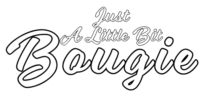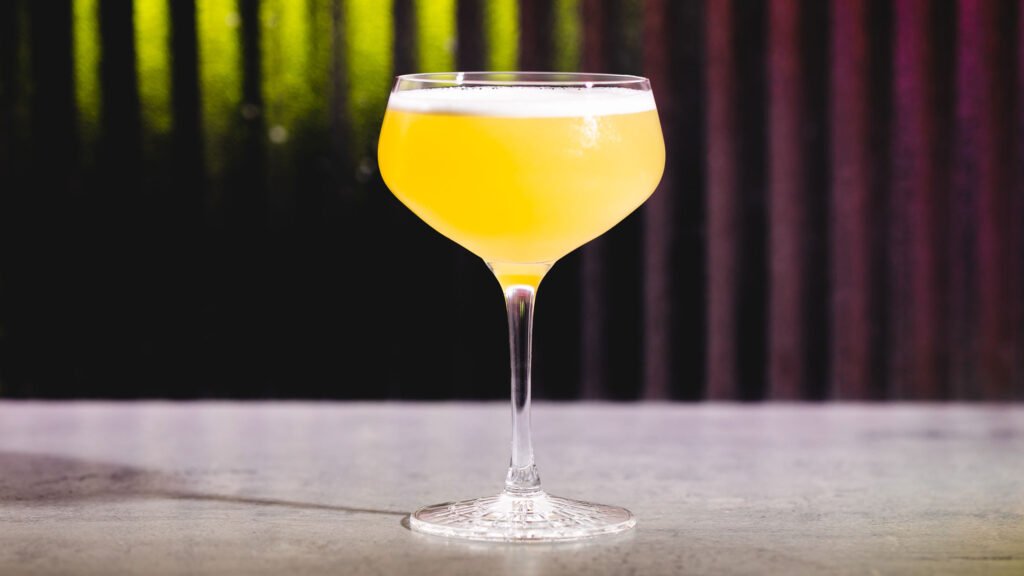[ad_1]
For many drink classes, there may be usually some extent of consensus: We are able to all agree what beer is. We share a normal understanding of what we imply by “wine.” And, because of strict authorized definitions surrounding the spirit, we all know precisely what makes bourbon bourbon. However the class of nonalcoholic—or N/A, or nonalc, or spirit-free—drinks is a growing frontier.
At their most elementary, nonalcoholic drinks are these that don’t comprise alcohol, together with water and ginger ale and chocolate milk, however clearly, we all know, that isn’t what we’re speaking about. So: Nonalcoholic drinks are… properly, what? Drinks that serve the social perform of alcohol? And what’s that, precisely? To offer you one thing to carry at a celebration? To do one thing, nonalcoholically, to impart some form of buzz? It’s an existential query. Even the manufacturers shaping the house can’t utterly agree on a solution.
“What’s actually cool in regards to the class is that really, there may be a lot permission and a lot room for innovation,” says Lorelei Bandrovschi, founder and CEO of the alcohol-free Pay attention Bar in New York Metropolis. And because the choices inside the nonalcoholic beverage market have exploded, so has the vocabulary to explain them. “It’s evolving as we communicate,” says Victoria Watters, co-founder of Dry Atlas, a media firm targeted on alcohol options (her most popular time period). In the mean time, the class continues to be largely outlined by way of what it isn’t: It’s nonalcoholic. It’s spirit-free and zero-proof. It’s described in opposition to its alcohol-containing cousins, which is logical, for communication functions—alcohol, in any case, continues to be the default in terms of adult-focused drinks served in fancy glasses—however it is usually limiting.
Principally, as of this writing, individuals discuss in regards to the taste of N/A drinks the identical method they do for booze, notes Laura Silverman, founding father of the nonalcoholic info hub Zero Proof Nation: Drinks are hoppy, smoky, bitter, botanical. (There was an period, she factors out, when the mouthfeel of nonalcoholic choices was typically, precisely, described as “skinny,” however we’re properly previous that now.) As an alternative, the present vocab of nonalcoholic ingesting is concentrated on carving out a separate house—one thing distinct from booze however equal to it, with its personal evolving subcategories.
Accordingly, the meanings of booze-free buzzwords are fuzzy, nuanced and typically controversial. It’s a language nonetheless in flux. However as a result of all we’ve to go on is the current, here’s a non-exhaustive information to the very present lexicon of nonalcoholic drinks.
Adaptogens: Particular herbs, roots and fungi which are thought to assist the physique deal with stress and return to a extra balanced state. A lot of them have lengthy histories in Japanese drugs; their position in Western drugs is… growing. Frequent examples embrace ashwagandha, ginseng, licorice root, lion’s mane, reishi and rhodiola rosea.
Alcohol options: On events when one may sometimes drink an alcoholic beverage, an individual may as an alternative select to nurse an alcohol various. Primarily synonymous with ANAs (see under), alcohol options are drinks that 1. don’t comprise alcohol, and a pair of. occupy the logistical and emotional house in any other case occupied by alcohol. Some individuals argue that to qualify as a real alcohol various, a drink should additionally present some form of alcohol-esque buzz, although that is hardly the consensus.
Alcohol-free: A product that accommodates no detectable alcohol, that means it has been examined by the U.S. Alcohol and Tobacco Tax and Commerce Bureau (TTB) and is—really—0.0 % alcohol by quantity (ABV). All alcohol-free drinks are nonalcoholic, however not all nonalcoholic drinks qualify as alcohol-free.
ANA: N/A is the extra frequent designation for the class, however some consultants argue that “ANA”—for grownup nonalcoholic beverage—is the superior time period, as a result of it specifies that the beverage in query is supposed to seize the expertise and/or social perform of ingesting alcohol. Seltzer, soda and milk, for instance, are all technically N/A drinks, however they’re not ANA drinks.
Analogue: Nonalcoholic variations of merchandise historically containing alcohol. A spirit-free bourbon, for instance, is a bourbon analogue, as a result of it has a transparent alcoholic counterpart.
Blends: A nonalcoholic product—sometimes a wine proxy—that has been produced not by dealcoholizing an alcoholic base, however slightly by layering fruits, vinegars and/or teas with herbs and spices to create a equally complicated taste profile.
Botanical: Actually, “derived from vegetation.” The usage of this time period typically alerts that this isn’t the form of synthetic sugar water one might need realized to count on from earlier eras of nonalcoholic drinks.
Burn: The feeling of, properly, burning related to ingesting high-proof alcohol. To efficiently recreate that side of the alcohol expertise, a zero-proof analogue (see additionally: Analogue) should discover one other method to evoke an analogous warmth, generally by way of spices like ginger and chiles.
Canna bevs: Drinks infused with THC (a psychoactive compound in hashish), with or with out the addition of CBD.
California sober: Utilizing weed however no different medicine or alcohol, as one does (supposedly) within the relaxed however (supposedly) health-conscious idyll of California. The time period can also be the unique framework for describing one’s mind-altering consumption by way of place, a traditional supply of jokes. Latest entrants to the class, by way of comedians on the web, embrace: New York sober (no alcohol, sure meth); an alternate New York sober (no alcohol, sure cocaine); Berlin sober (no alcohol, sure ketamine) and Chicago sober (sure alcohol).
Now Coming into the Golden Age of N/A Beer
In simply 5 years, the class has moved past its staid roots to change into a booming business with its personal forged of big-name gamers and unbiased upstarts.
Damp ingesting, flex/flexi ingesting: Varied methods of describing an deliberately average—although not completely abstemious—relationship with alcohol with barely totally different implications. Whereas “damp ingesting” is synonymous with (although maybe considerably much less smug than) “conscious ingesting” and signifies a purposeful discount in alcohol consumption, “flex ingesting”—Watters’ most popular time period—implies alcohol neutrality, with no hierarchy between alcoholic and nonalcoholic drinks.
Dealcoholization: The method of eradicating alcohol from a product that sometimes accommodates it, comparable to wine or beer. The 2 commonest methods to do that are reverse osmosis—an elaborate filtering course of that separates out the alcohol from the remainder of the liquid—and vacuum distillation, throughout which the product is heated till the alcohol evaporates. As a result of each of those processes can mess with taste, some producers, Athletic Brewing Co. chief amongst them, are very proud that they don’t dealcoholize their merchandise, however as an alternative use proprietary brewing strategies that forestall the manufacturing of alcohol within the first place.
Elixir, tonic: Drinks that wouldn’t have any prescriptive definition, however carry an interesting air of witchy thriller and/or Nineteenth-century prescribed drugs. Elixirs, particularly, sound intriguingly complicated, and whereas neither time period is regulated in any method, they each slyly indicate—sarcastically or in any other case—some form of healing state change.
Ferments (noun): A obscure however cool- and sophisticated-sounding time period for nonalcoholic fermented drinks that are supposed to serve the identical elevated social perform as alcoholic ones.
Practical: Applies to drinks that serve some form of mind- or mood-altering goal past fundamental hydration. Usually, this implies drinks that comprise adaptogens and/or nootropics (see additionally: Adaptogens; Nootropics). Some individuals additionally take into account infused drinks (see additionally: Infused) to be a part of this class—they’re, in some ways, extraordinarily practical—however many don’t. On the planet of sentimental drinks, “practical” tends to imply “containing pre- or probiotics,” however this isn’t often the case when describing alcohol options (see additionally: Nonalcoholic; Alcohol various).
Infused beverage: In concept, “infusing” means to steep one thing (fruit, herbs, garlic, espresso beans) in some form of liquid (water, oil, grain alcohol) for taste and/or dietary advantages. However within the realm of nonalcoholic drinks, “infused beverage” sometimes refers to just one kind of infusion: THC, a psychoactive chemical in hashish. Partially, the label was devised to keep away from violating the phrases of service of social media platforms like Instagram.
Kava: Recognized for its calming and mood-enhancing results—it will get in comparison with Xanax—kava, a drink comprised of the bottom roots of the kava shrub, has been used socially and ceremonially for hundreds of years within the Pacific Islands, and extra lately has been gaining recognition as an alcohol various in the USA. Consuming kava is authorized, if unregulated.
N/A, nonalcoholic, nonalc, spirit-free, zero-proof: Not-entirely-but-mostly interchangeable phrases used to explain nonalcoholic drinks, which federal laws outline as drinks which have lower than 0.5 % ABV. No one agrees on the perfect time period, though consultants will debate their relative deserves passionately. Nonetheless, all of them imply just about the identical factor: This drink doesn’t, colloquially talking, have booze in it.
Nootropics: Pure and artificial substances that supposedly enhance one’s cognitive skills. Caffeine is by far the commonest instance—all people’s doing it—however different gamers embrace 5-HTP, GABA (gamma-aminobutyric acid) and L-theanine. Some nootropics are additionally adaptogens—lion’s mane qualifies as each—and in consequence, the 2 classes are sometimes lumped collectively. (See additionally: Adaptogens; Practical.)
Zebra striping: This British time period refers back to the follow of alternating nonalcoholic and alcoholic drinks all through a night. Associated to the also-British follow of “bookending,” whereby one begins and ends the night with nonalcoholic choices, however could have an alcohol-containing drink or two in between.
[ad_2]



